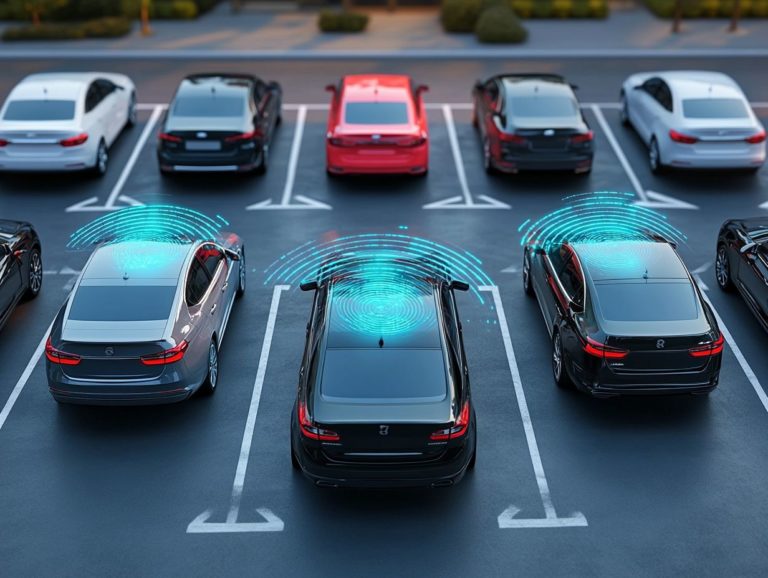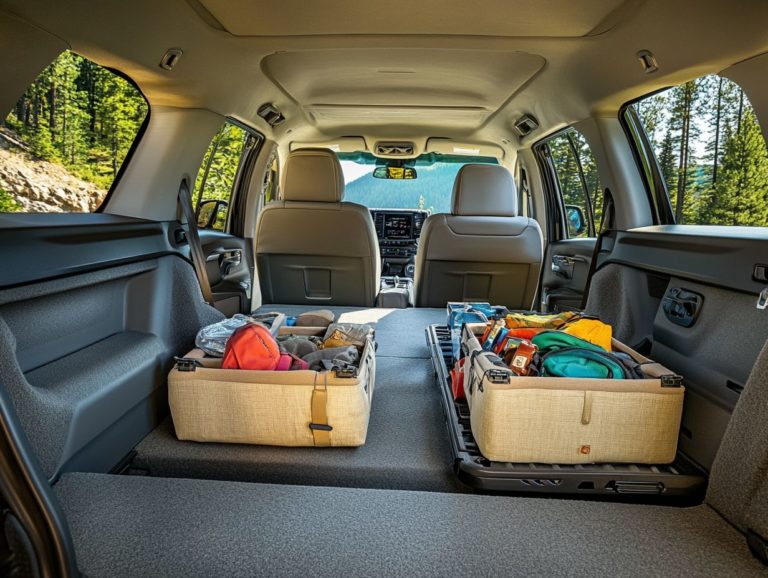Comparing Climate Control Features in Vehicles
In today s fast-paced world, the comfort of your vehicle is more important than ever. Climate control systems play a key role in making your driving experience enjoyable.
This article explores different types of climate control systems. We’ll compare manual and automatic options and highlight features like temperature control, humidity management, and seat heating.
Discover the benefits these systems offer, from enhanced comfort to better fuel efficiency. You’ll also learn how various vehicle models perform in climate control.
Join us as we explore the fascinating world of automotive climate control!
Contents
- Key Takeaways:
- Types of Climate Control Systems
- Features to Consider
- Benefits of Climate Control in Vehicles
- Comparing Climate Control in Different Vehicle Models
- Frequently Asked Questions
- What cool features do modern vehicles have for climate control?
- Why compare climate control features in vehicles?
- How do automatic temperature control systems work?
- What are the benefits of dual-zone climate control?
- What other factors should be considered when comparing climate control features?
- Can I upgrade the climate control system in my vehicle?
Key Takeaways:
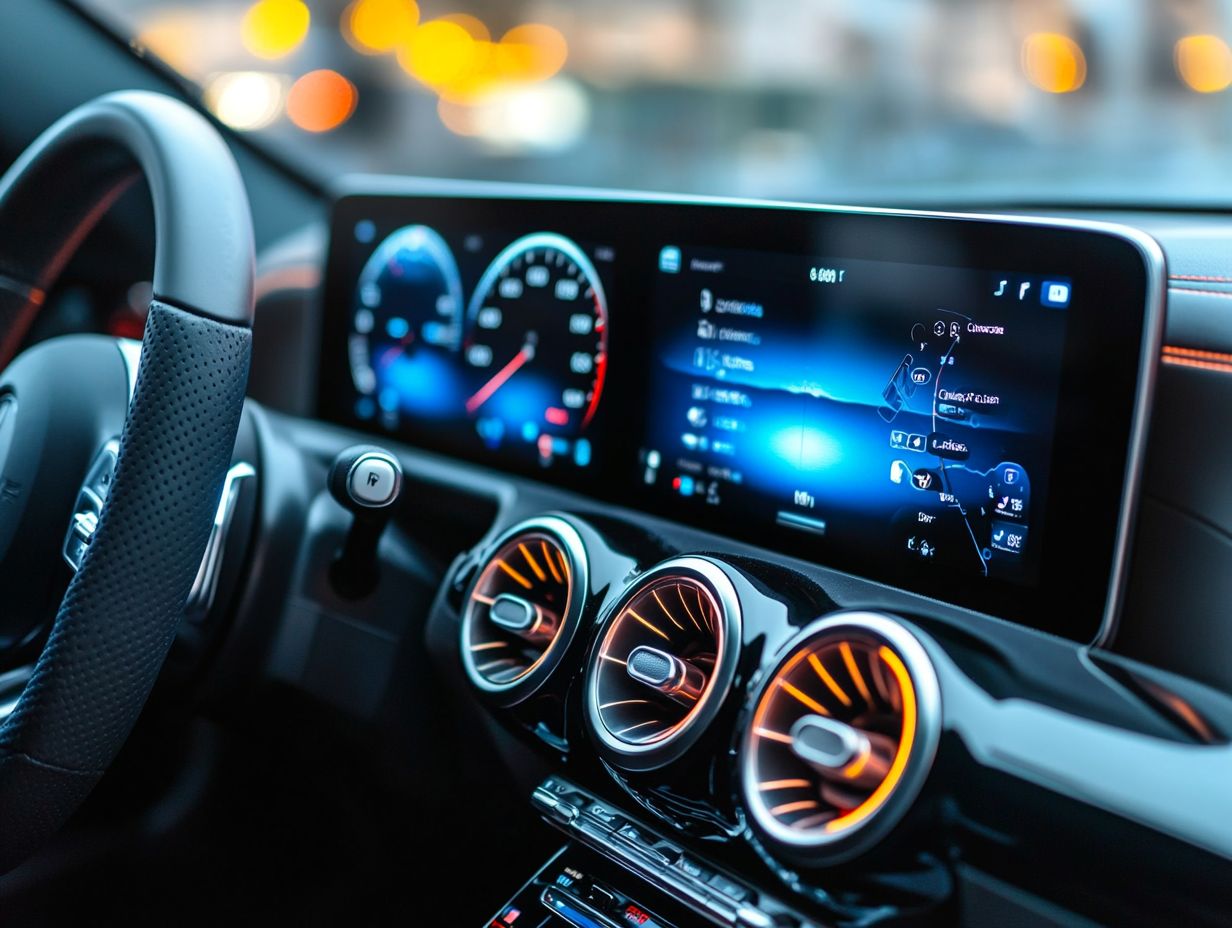
- Automatic climate control systems provide convenience and accurate temperature control.
- Features like seat and steering wheel heating enhance comfort for drivers.
- Climate control increases comfort and improves fuel efficiency, making it a key feature to consider when buying a vehicle.
What is Climate Control?
Climate control is the technology in your vehicle that manages the interior environment for your comfort. It regulates air temperature, humidity, and airflow to enhance your driving experience.
Advanced climate control systems monitor and adjust settings in real-time, providing a seamless experience. They not only control temperature but also improve air quality by filtering out pollutants.
Different models offer various features. For instance, dual-zone temperature control allows both driver and passenger to set their ideal comfort levels.
Types of Climate Control Systems
You ll find a variety of climate control systems in vehicles. These range from simple manual air conditioning to advanced automated systems in luxury models.
High-end vehicles provide options like dual-zone, tri-zone, and four-zone climate control, ensuring every passenger enjoys their perfect temperature.
Manual vs Automatic Climate Control
Manual air conditioning requires you to adjust temperature and fan speed yourself. Automated systems handle these settings based on conditions and preferences.
Unlike manual systems, automated ones use sensors to monitor interior temperature and humidity. This provides precise regulation without constant adjustments.
Different models showcase varying sophistication levels in automated systems. Some maintain a set temperature, while others offer personalized settings for airflow direction and intensity.
Features to Consider
When assessing climate control options in vehicles, consider various features carefully. Focus on temperature control mechanisms, airflow systems, and humidity control.
Advanced features like seat heating and remote start capabilities let you pre-cool or pre-heat the cabin before entering. This is crucial in luxury models like the Mercedes EQS, where comfort and convenience matter most.
Temperature Control
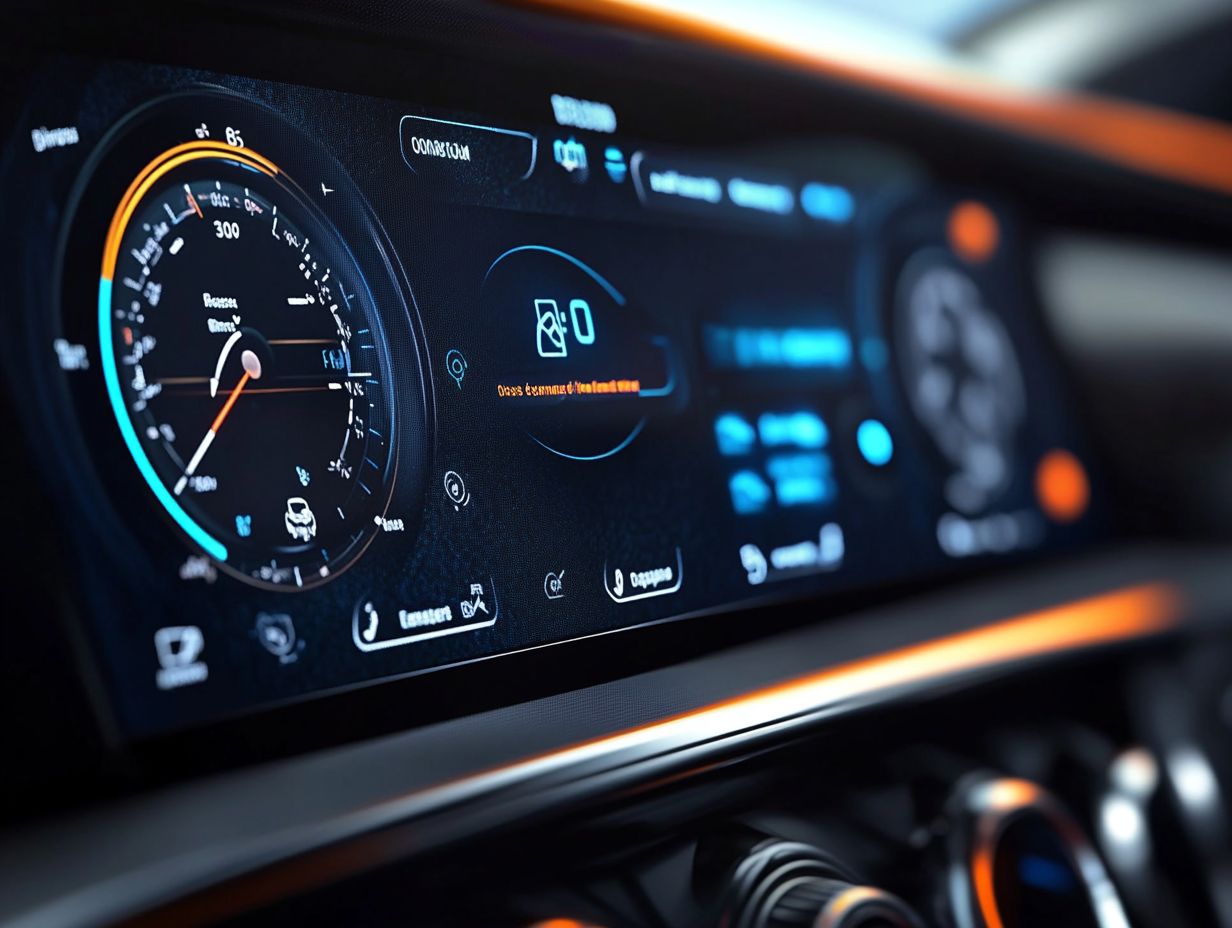
Temperature control plays a pivotal role in climate control systems. It directly affects air temperature and how warm or cool you feel inside your vehicle.
You can adjust fan speed and access automated settings based on real-time data and personal preferences. These systems operate seamlessly with advanced sensor technology that monitors various parameters, including humidity, external temperature, and sunlight exposure.
Automated climate controls allow the system to adapt intuitively to changing conditions. For instance, many luxury models now offer dual-zone climate control, enabling you and your front passenger to set individual temperature preferences for a personalized comfort experience.
Some models even feature intelligent seat heaters that detect your body temperature and adjust automatically. Additionally, cabin air quality sensors ensure a refreshing atmosphere. These innovations enhance your interaction with the vehicle and significantly elevate overall driving comfort.
Airflow and Ventilation
Airflow and ventilation are crucial for maximizing the effectiveness of climate control systems. They ensure that conditioned air flows seamlessly throughout the vehicle’s interior.
This not only enhances passenger comfort but also optimizes air conditioning efficiency. Understanding airflow dynamics can elevate your driving experience and significantly impact the vehicle’s thermal performance.
In luxury automobiles, advanced technologies like dual-zone climate control and active cabin air filtration systems represent a remarkable evolution in design. These features allow personalized temperature settings while effectively managing humidity and air quality.
Innovations such as integrated sensors and smart ventilation openings fine-tune climate control, adapting to changing conditions to create an environment that feels just right for every journey.
Humidity Control
Humidity control is essential for maintaining a comfortable cabin environment. It effectively manages moisture levels to prevent discomfort and keep windows from fogging.
This enhances your overall climate control experience and elevates passenger satisfaction. In modern luxury vehicles, advanced technology plays a vital role in monitoring and adjusting humidity levels.
Sensors continuously gather data about the environment, allowing the climate system to respond in real-time. This ensures that you and your passengers can enjoy a pleasant atmosphere, no matter the weather outside.
This precise management boosts comfort and enhances safety by ensuring clear visibility through unobstructed windows. For those who appreciate luxury and performance, the seamless integration of humidity control technology signifies a commitment to an exceptional user experience, making every journey enjoyable and secure.
Seat and Steering Wheel Heating/Cooling
Innovative features like seat heating and steering wheel cooling have become standard in modern cars. They let you tailor your comfort levels, enhancing your experience, especially in luxury models such as the Mercedes EQS.
These advancements accommodate various temperature preferences while prioritizing user-friendly interfaces that remember your unique settings. With automated systems that intelligently adjust to the weather and your habits, these technologies create a truly personalized environment.
For example, as soon as temperatures drop, your seats warm up instantly. This ensures a cozy ride from the moment you step inside.
Similarly, the cooling function for the steering wheel provides much-needed relief during hot summer months. It helps you stay comfortable and focused on the road.
Ultimately, these innovations contribute to an elevated sense of luxury and well-being. They transform your driving experience into something truly exceptional.
Remote Start and Pre-Cooling/Heating
Remote start features enable you to pre-cool or pre-heat your vehicle before you step inside. This means you ll enjoy ultimate comfort, no matter the weather.
Imagine being able to activate your vehicle’s heating or cooling functions from afar, often through a smartphone app or key fob. This innovation is particularly beneficial on frigid winter mornings or sweltering summer afternoons.
Luxury brands like BMW and Mercedes-Benz take this a step further. They equip their vehicles with sophisticated remote start systems that not only adjust the cabin temperature but also ensure the engine is warmed up for optimal performance.
This seamless integration transforms your driving experience. It spares you from discomfort and allows you to step into a perfectly conditioned vehicle, ready for your journey before you even unlock the doors.
Benefits of Climate Control in Vehicles
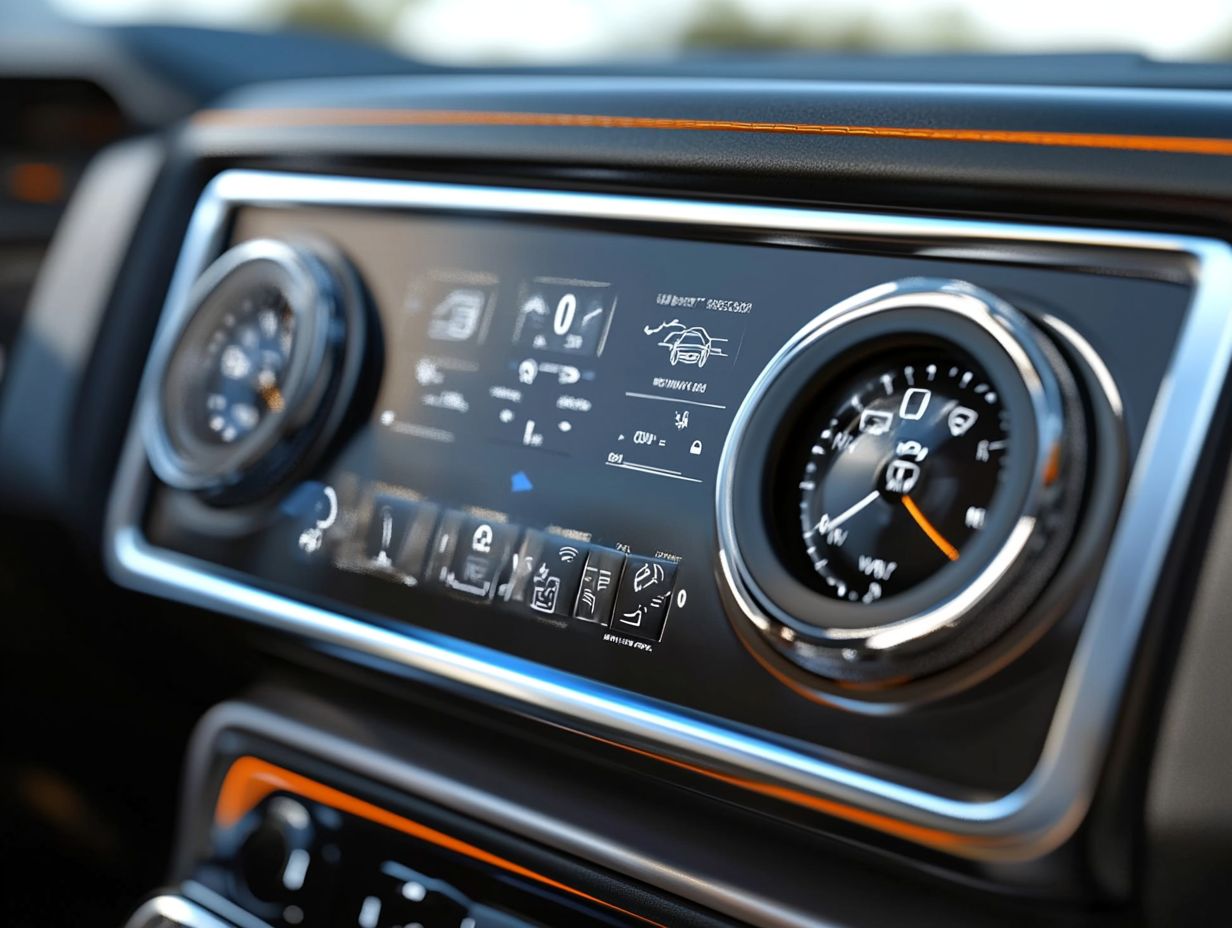
The advantages of effective climate control systems in vehicles are truly multifaceted. You ll experience enhanced passenger comfort while also enjoying improved fuel efficiency.
These sophisticated systems seamlessly adapt to changing environmental conditions. They optimize the vehicle’s energy consumption, particularly evident in luxury brands like Mercedes.
The integration of such technology elevates your driving experience to a whole new level.
Comfort and Convenience
One of the standout benefits of advanced climate control is the level of comfort and convenience it offers you as a passenger. With personalized climate settings, your overall experience in a luxury vehicle truly reaches new heights.
You can fine-tune the system to suit your preferences. This ensures that you enjoy your ideal temperature throughout your journey.
Imagine slipping into a luxury vehicle equipped with climate control for different areas. This allows both front and rear occupants to adjust their settings independently.
Features like heated and ventilated seats respond swiftly to environmental changes. They elevate your comfort to an entirely new standard.
The seamless integration of these climate settings with user-friendly touchscreen interfaces or voice activation adds a touch of sophistication. It transforms an ordinary trip into a bespoke experience.
Enhanced air filtration systems further contribute to a pleasant atmosphere. This makes every ride not just enjoyable, but truly exceptional.
Improved Fuel Efficiency
Investing in effective climate control systems can significantly enhance your fuel efficiency by optimizing energy consumption through automated adjustments based on real-time conditions. This enhances your driving experience.
These systems expertly manage air temperature and airflow, alleviating the burden on your engine. A study by the U.S. Department of Energy reveals that vehicles equipped with advanced climate control technologies can achieve fuel savings of up to 10%.
Premium models increasingly adopt intelligent features, such as zone controls and smart systems that tailor climate settings to your preferences and external weather conditions. These innovations not only maximize your comfort but also promote energy efficiency, allowing you to enjoy improved fuel economy without sacrificing convenience.
Comparing Climate Control in Different Vehicle Models
When comparing climate control systems among various vehicle models, you’ll uncover notable differences in features, technology, and overall performance. To ensure you’re considering all aspects, check out key features to compare in cars. Luxury models, such as the Mercedes S-Class, W140, and EQS, often set the benchmark with their sophisticated climate control solutions.
Popular Models and Their Features
Models like the Mercedes S-Class, EQS, and W140 exemplify a remarkable array of advanced climate control features, setting new standards for comfort and user experience in the automotive world.
These vehicles come equipped with sophisticated multi-zone climate systems, allowing each passenger to set their ideal temperature, regardless of the weather outside. The S-Class elevates this experience with its innovative air filtration and ionization technology, which purifies the cabin air and provides relief for those prone to allergies.
The EQS takes climate management to another level by monitoring temperature and adjusting humidity levels to create an oasis of tranquility. These exceptional models stand out by seamlessly integrating cutting-edge features, demonstrating a commitment to passenger comfort and well-being.
Frequently Asked Questions
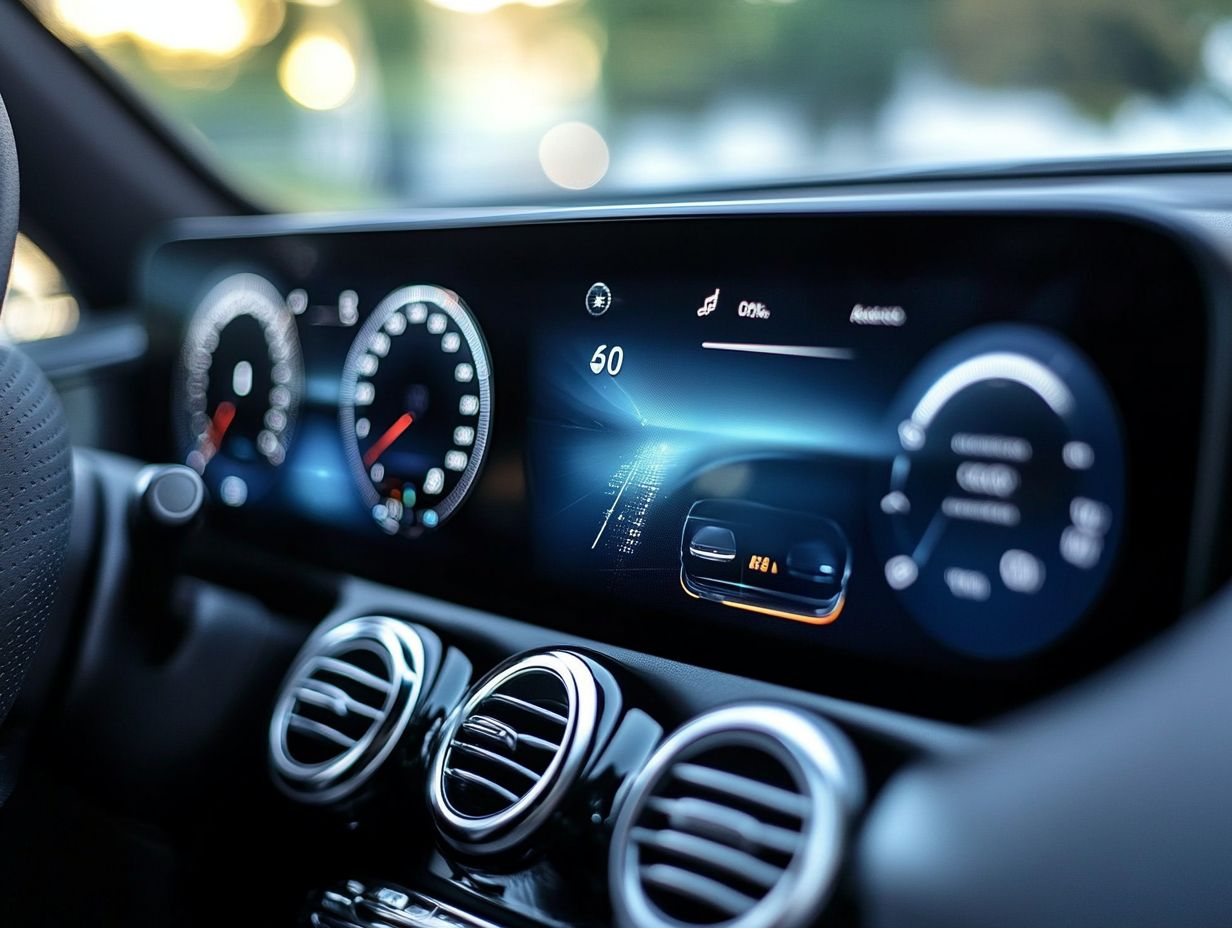
What cool features do modern vehicles have for climate control?
Modern vehicles include features like air conditioning, heating, ventilation, automatic temperature control, and dual-zone climate control.
Why compare climate control features in vehicles?
Comparing climate control features helps consumers identify which options are most important to them and compare eco-friendly features in new cars to find the best value for their budget.
How do automatic temperature control systems work?
Automatic temperature control systems use sensors to measure the temperature inside the vehicle and adjust heating or cooling to maintain the driver-selected temperature.
What are the benefits of dual-zone climate control?
Dual-zone climate control allows different temperature settings for the driver and front passenger, providing personalized comfort for everyone.
What other factors should be considered when comparing climate control features?
Besides the main features, consider noise level, air quality, and energy efficiency when comparing climate control systems in vehicles.
Can I upgrade the climate control system in my vehicle?
Yes, depending on your vehicle’s make and model, it may be possible to upgrade the climate control system with the latest features for an enhanced driving experience.




